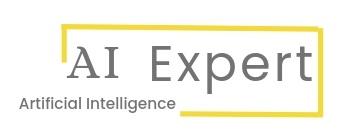
Table of Contents
ToggleWhat is Machine Learning (ML) in simple words?
Machine learning is a branch of AI that enables computers to do tasks better without being explicitly trained. It’s like when you learn to play a game. You don’t need someone to tell you how to move the pieces or what to do next. You just watch other people play and then you try it yourself. Machine learning works the same way. Computers watch a lot of data and then they try to do things on their own.
For example, a machine learning algorithm could be used to learn how to recognize different animals in pictures. The algorithm would be trained on a dataset of pictures of animals, and it would learn to identify the different animals by looking at their features. Once the algorithm is trained, it could be used to identify animals in new pictures.
Machine learning allows computer systems to learn from data and improve their performance on a task. It is becoming increasingly important as computers become more powerful and as the amount of data available to us grows.
How Machine Learning (ML) Work?
Artificial intelligence (AI) in the form of machine learning enables software to learn from data and develop over time without being explicitly programmed. ML algorithms use historical data to identify patterns and make predictions about future data.
ML algorithms are trained on a set of data that includes both the input and output values. The algorithm learns to identify patterns in the data and use those patterns to predict the output value for new input data. Machine learning (ML) works by training computer systems to learn from data and make predictions or decisions without being explicitly programmed.
The process of how machine learning (ML) works or phases of machine learning can be summarized as follows:
- ML algorithms are not created equal. Each type has its own strengths and weaknesses, which make them better suited for certain tasks than others.
- The best type of algorithm to use for a particular task will depend on the amount and quality of data available, the complexity of the task, and the desired accuracy.
Data Collection: Gather relevant data that is representative of the problem you want to solve or the task you want the machine learning system to perform. The quality and quantity of the data play a crucial role in the effectiveness of the model.
Data Pre-processing: Clean and prepare the data for analysis. This step involves handling missing values, dealing with outliers, normalizing or scaling features, and other necessary transformations to ensure the data is suitable for the machine learning algorithms.
Feature Engineering: Select or create the most relevant features from the data. Feature engineering involves transforming raw data into meaningful representations that can improve the performance of the machine learning model. This step may involve domain knowledge, statistical analysis, or data exploration techniques.
Model Selection: Choose the appropriate machine learning algorithm(s) based on the problem type and the available data. Different algorithms have different assumptions and characteristics, so selecting the right one is important.
Model Training: Use the training data to train the machine learning model. The model learns from the data by adjusting its internal parameters or structure to minimize errors or maximize performance on a given task. The learning process typically involves optimization algorithms that iteratively update the model based on the training data.
Model Evaluation: Assess the performance of the trained model using evaluation metrics and validation data. This step helps determine how well the model generalizes to unseen data and if it meets the desired criteria for accuracy or other performance measures.
Model Deployment: Once satisfied with the model’s performance, deploy it to a production environment to make predictions or decisions on new, unseen data. This can involve integrating the model into existing systems, creating APIs, or building user interfaces.
Model Monitoring and Maintenance: Continuously monitor the performance of the deployed model and make necessary adjustments if the data distribution changes or the model’s performance deteriorates. Regularly retraining or updating the model may be required to ensure its accuracy and reliability over time.
Throughout this process, machine learning (ML) algorithms leverage mathematical and statistical techniques to find patterns, relationships, or representations in the data that allow them to make predictions or decisions. The algorithms learn iteratively from the data, improving their performance as they receive more information.
It’s important to note that the specific details and steps involved in machine learning can vary depending on the problem, the algorithm used, and the available data. The process is often iterative and may require multiple iterations to refine the model and improve its performance.
Types of Machine Learning (ML) Algorithms
There are 4 main types of ML Algorithms:
Supervised: Are trained on labeled data. This means that the data has been tagged with the correct output for each input. For example, a supervised learning algorithm could be trained on a dataset of images of cats and dogs, with each image tagged as either a cat or a dog. Once the algorithm is trained, it can be used to classify new images
as cats or dogs.
Unsupervised: Are trained on unlabeled data. This means that the data does not have any labels associated with it. Unsupervised learning algorithms can be used to find patterns in data that would not be obvious to humans. For example, an unsupervised learning algorithm could be used to find clusters of similar images in a dataset of unlabeled images.
Semi-supervised: Are trained on both labelled and unlabeled data. This allows the algorithms to learn from the labeled data, while also being able to find patterns in the unlabeled data. Semi-supervised learning algorithms can be more accurate than supervised learning algorithms when there is a limited amount of labeled data available.
Reinforcement: Are trained by trial and error. This ML algorithm is given a reward for taking actions that lead to desired outcomes, and a penalty for taking actions that lead to undesired outcomes. The algorithm learns to act in a way that maximizes its rewards over time. Reinforcement learning algorithms can be used to train agents to play games, control robots, and make other decisions in complex environments.
Some commonly used algorithms are:
Supervised Learning Algorithms
- Linear Regression: Models the relationship between independent variables and a continuous target variable.
- Logistic Regression: Used to calculate the likelihood that an event will occur in issues involving binary classification.
- Decision Trees: Hierarchical models that make decisions based on feature values to reach a conclusion.
- Random Forest: Ensemble of decision trees that provide more robust predictions.
- Support Vector Machines (SVM): Find optimal hyperplanes to separate data points into different classes.
- Naive Bayes: Probabilistic algorithm based on Bayes’ theorem for classification tasks.
- K-Nearest Neighbors (k-NN): Assigns a class to an example based on the classes of its k nearest neighbors.
- K-means Clustering: Divides data points into k distinct clusters based on similarity.
- Hierarchical Clustering: Builds a hierarchy of clusters by grouping similar data points.
- Principal Component Analysis (PCA): minimizes data dimensionality while retaining critical information.
- Association Rule Learning: Discovers relationships or associations between variables in large datasets.
- Autoencoders: Neural networks designed to learn compressed representations of input data.
- Gaussian Mixture Models (GMM): Models data distribution using a mixture of Gaussian distributions.
- Self-Training: Uses a small labelled dataset and a larger unlabeled dataset to improve classification performance.
- Co-Training: This ML algorithm utilizes multiple views or feature sets to improve learning accuracy.
- Generative Models: Model the underlying distribution of the data to make predictions on unlabeled data. Commonly used generative models include Gaussian Mixture Models (GMMs), Hidden Markov Models (HMMs), and Variational Autoencoders (VAEs).
- Expectation-Maximization (EM): EM is a general framework for solving problems with missing or incomplete data. EM can be used to estimate the parameters of a model using both labeled and unlabeled data.
- Transductive Support Vector Machines (TSVM): It aims to find a decision boundary that separates the labeled instances and ensures the unlabeled instances are close to their predicted class. TSVM considers both labeled and unlabeled data in the optimization process.
- Q-Learning: Popular ML reinforcement learning algorithm that enables an agent to learn an optimal policy through interactions with an environment. It falls under the category of model-free learning algorithms, meaning it does not require prior knowledge of the environment’s dynamics. Used for reinforcement learning in Markov decision processes (MDPs).
- Deep Q-Networks (DQN): Combines Q-Learning with deep neural networks for handling high-dimensional state spaces.
- Policy Gradient Methods: Optimize the policy directly by adjusting its parameters based on rewards.
- Actor-Critic Methods: Combine elements of both value-based and policy-based RL. They maintain two components: an actor, which learns the policy, and a critic, which estimates the value function.
- Proximal Policy Optimization (PPO): It is a policy optimization algorithm which iteratively updates the policy by optimizing a surrogate objective function, ensuring that the policy update is within a specified proximity to the previous policy.
- Monte Carlo Tree Search (MCTS): MCTS builds and explores a search tree by iteratively expanding and sampling actions to estimate the value of states.
Machine Learning FAQs
Machine learning is a branch of artificial intelligence that enables computers to learn and make predictions or decisions without being explicitly programmed.
Fraud detection, Spam filtering, Image recognition, Speech recognition, Autonomous vehicles.
Data, Algorithms, Training, Evaluation and Testing.
Linear regression, Logistic Regression, Decision Tree, K-Nearest Neighbors (KNN), Support Vector Machines (SVM), Naive Bayes, K-means Clustering, Q-Learning, Deep Q-Networks (DQN) and Gradient Boosting Machines (GBM).
Supervised Learning, Unsupervised Learning and Reinforcement Learning.
A machine learning algorithm is a mathematical model or a set of rules and calculations that enables a computer system to learn patterns or make predictions from data without being explicitly programmed. It allows machines to automatically improve and adapt their performance as they are exposed to more data.
Problem Definition, Data Collection, Data Preparation, Feature Engineering, Model Training, Model Evaluation and Model Deployment.
Supervised Learning
- Input and output variables are presented together with labelled data.
- Learns to make predictions or classify new data based on patterns in the labeled training data.
Unsupervised Learning
- Uses unlabeled data, where only the input variables are provided.
- Learns to discover hidden patterns or structures in the data.
Regression in machine learning refers to a type of supervised learning task that aims to predict continuous numerical values based on input features. It involves building a model that learns the relationship between the input variables and the target variable, allowing us to make predictions for new data points.




